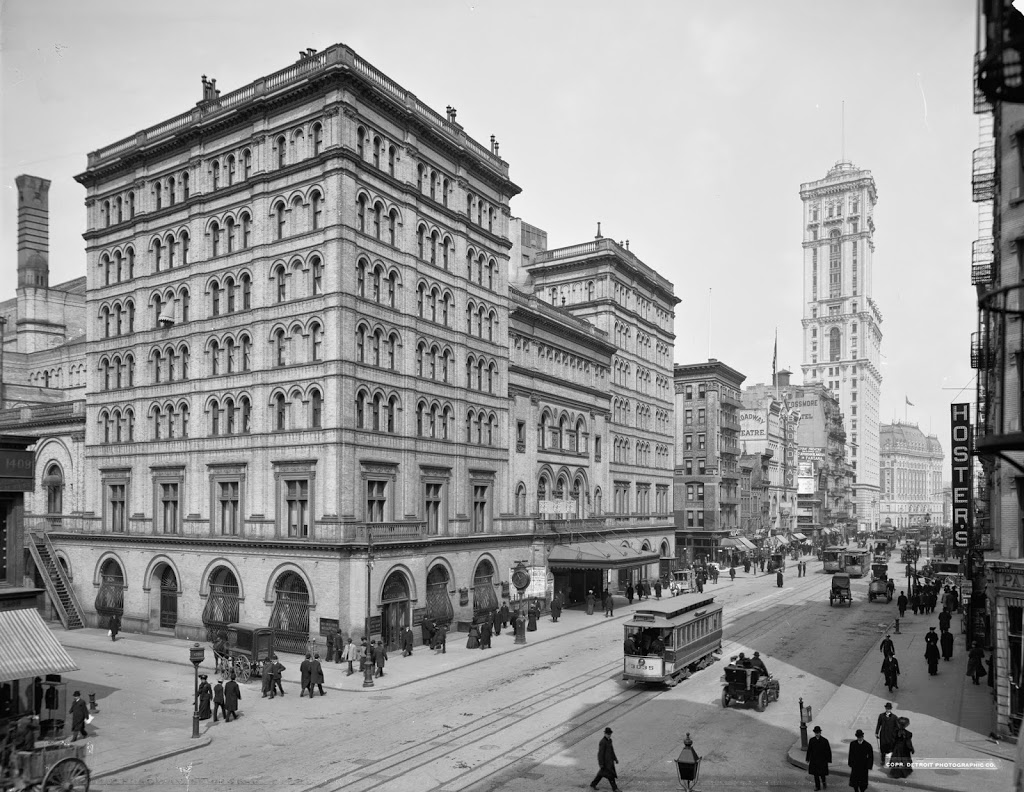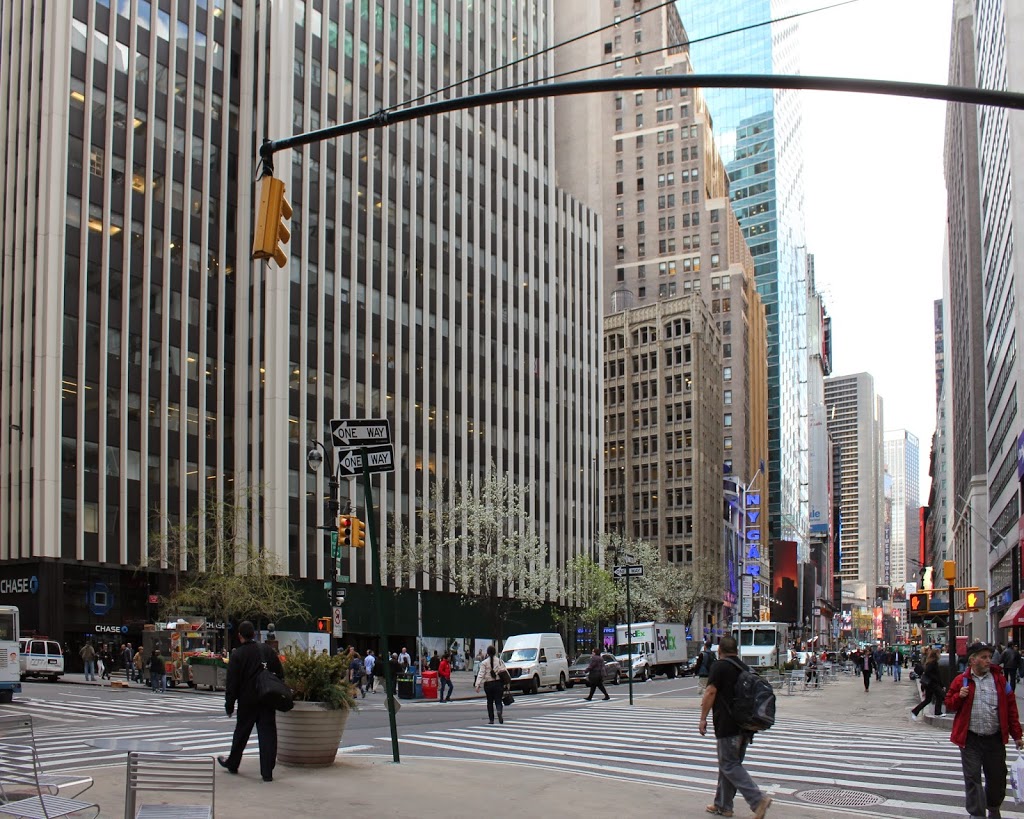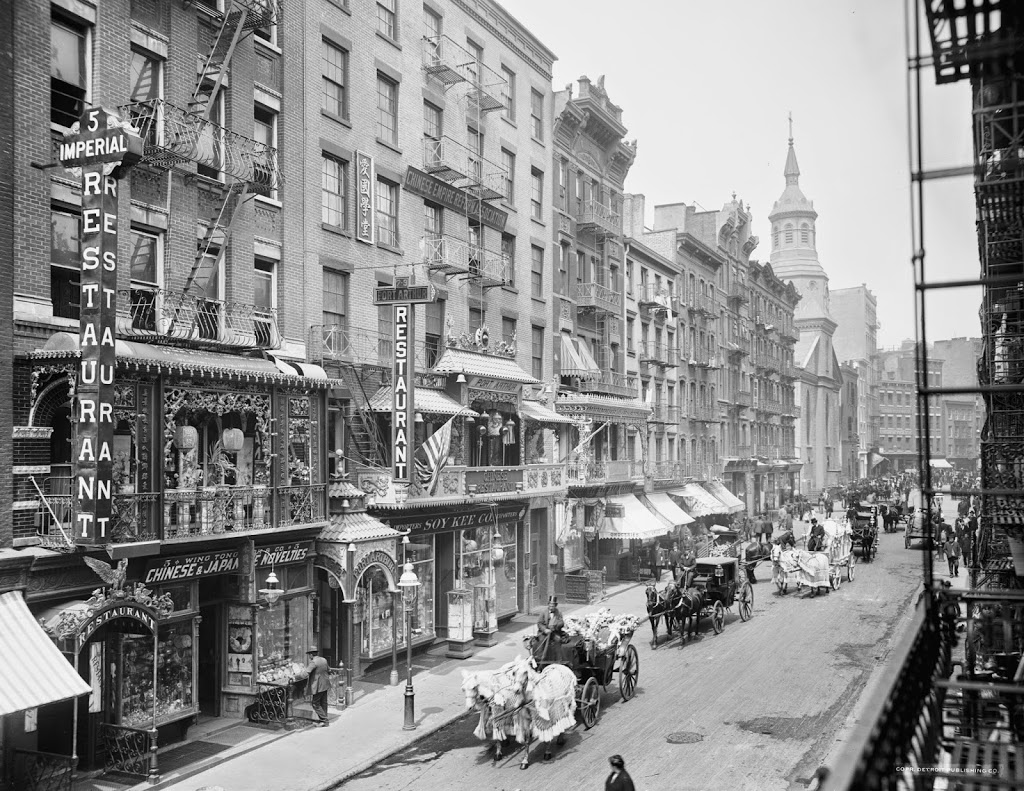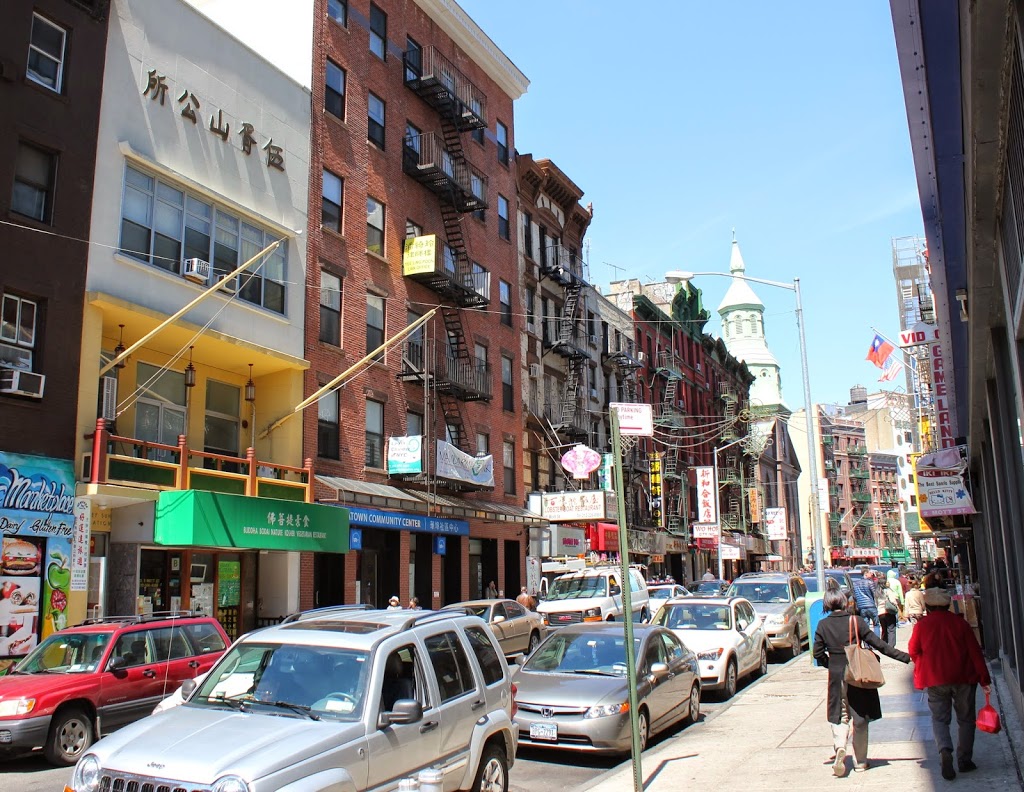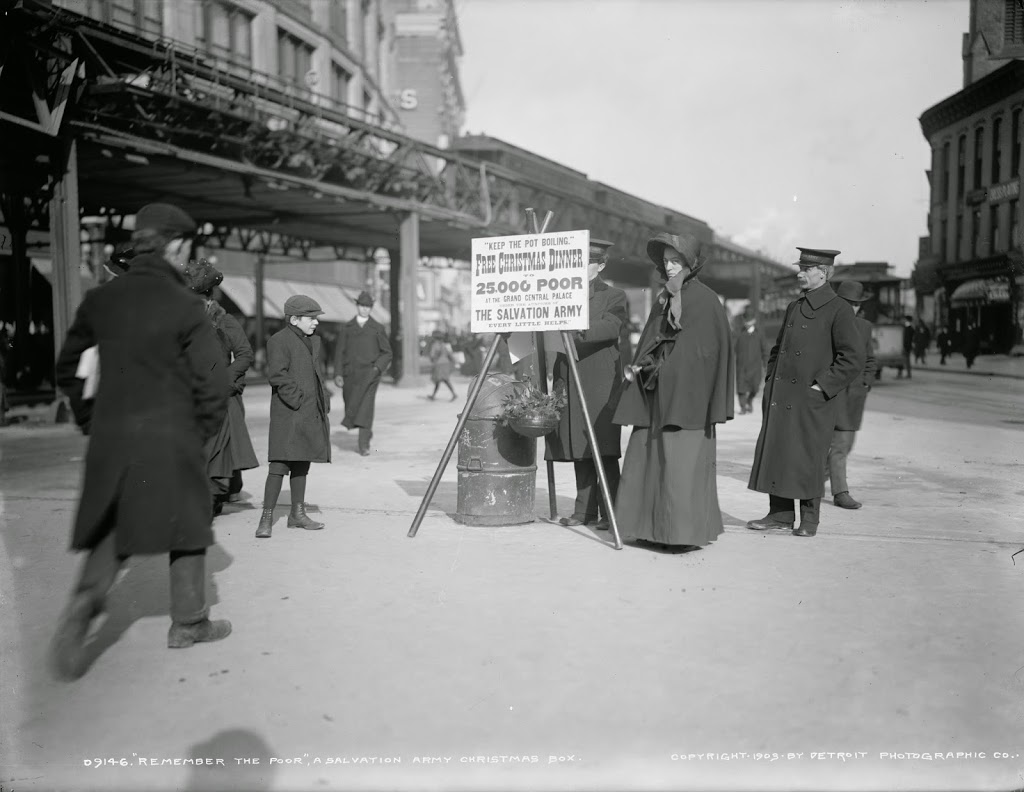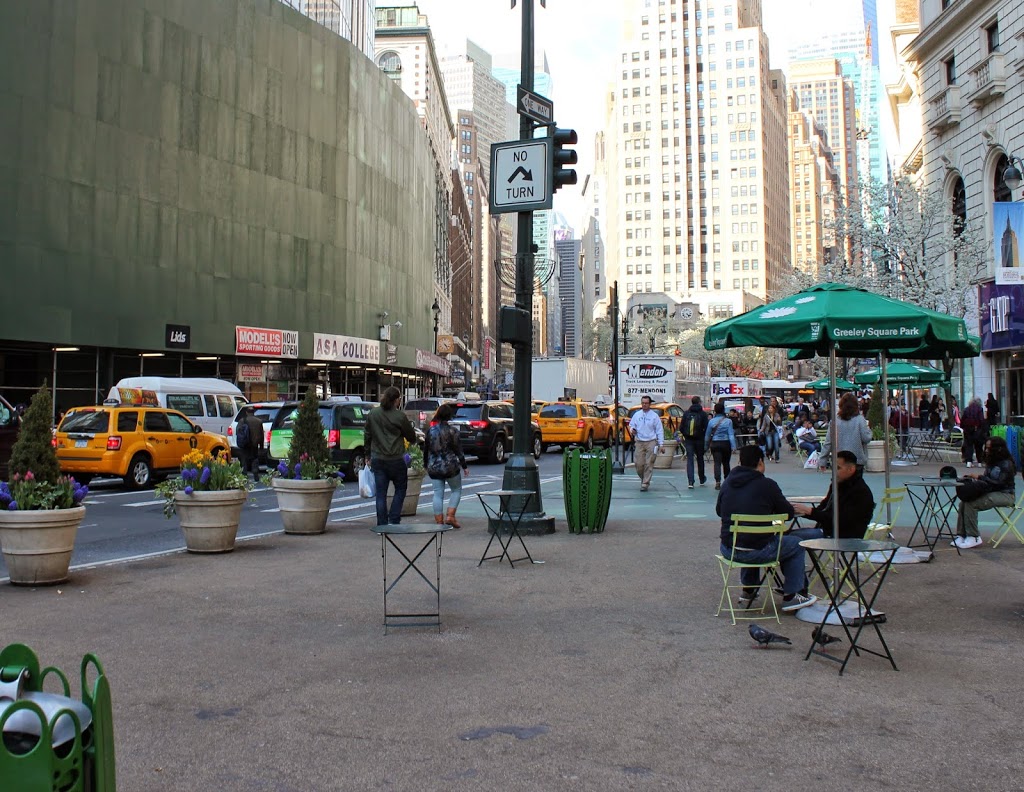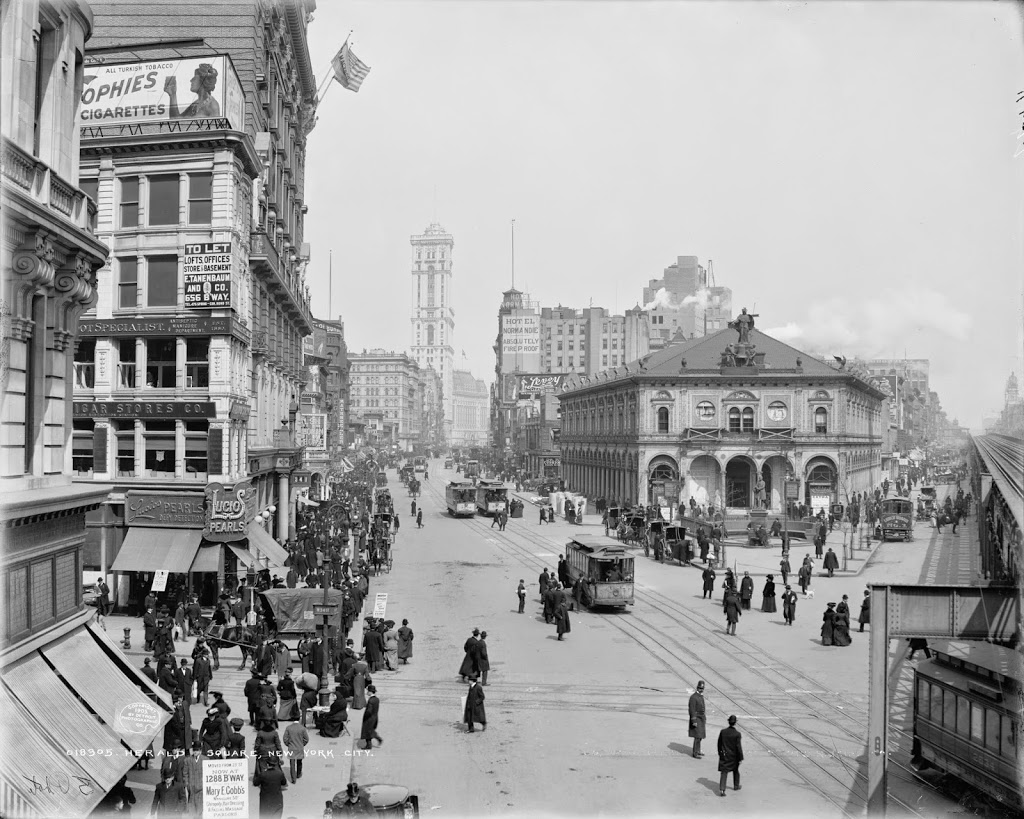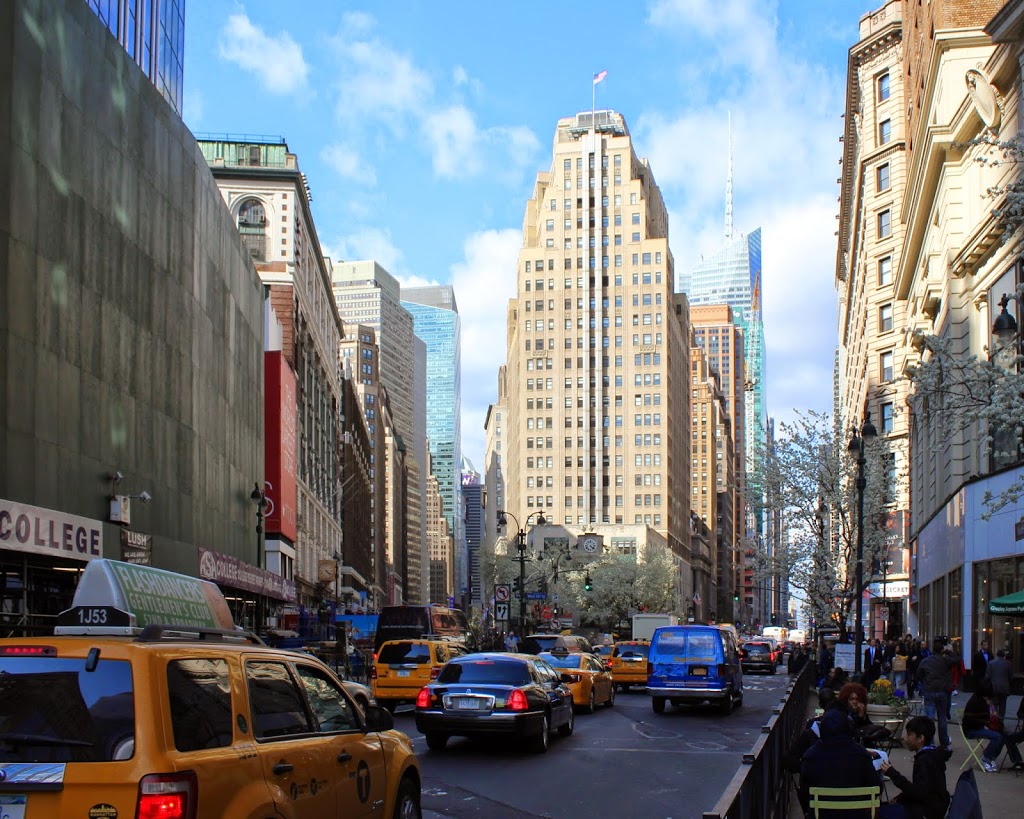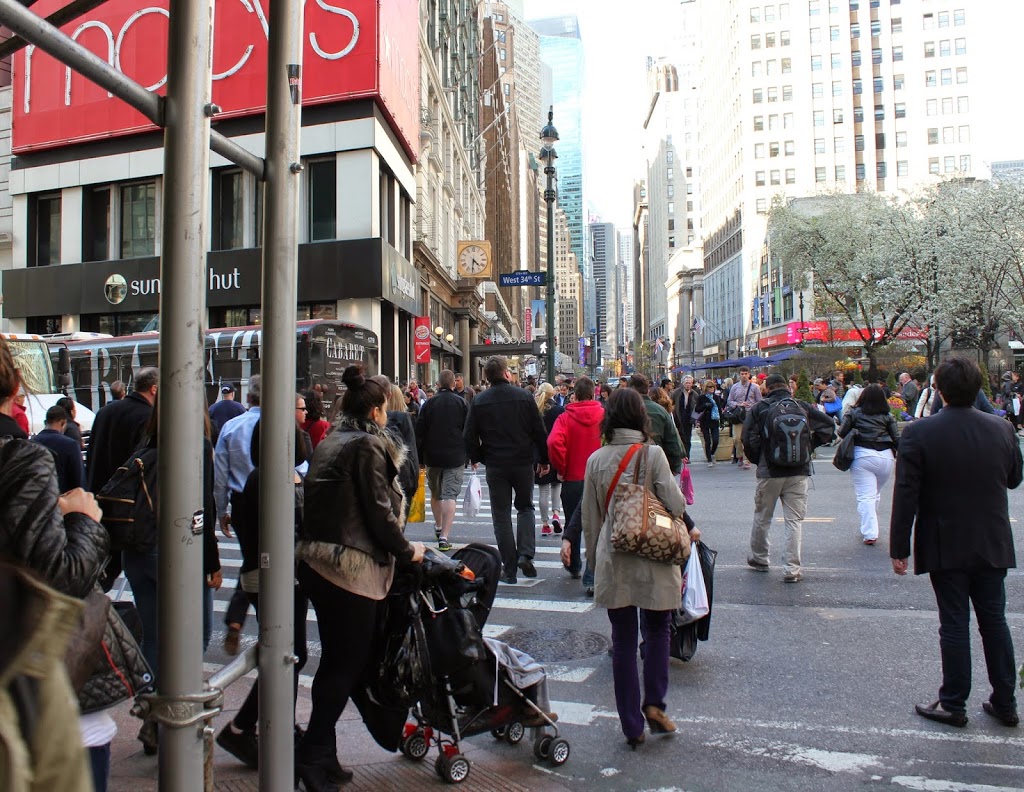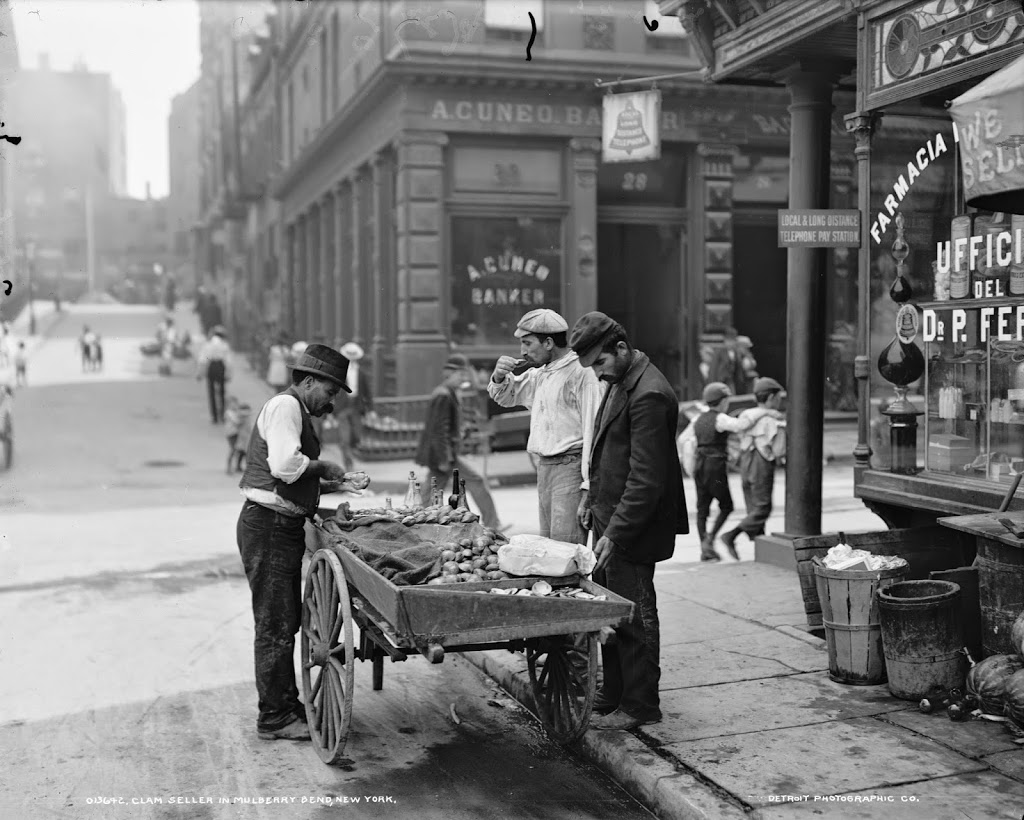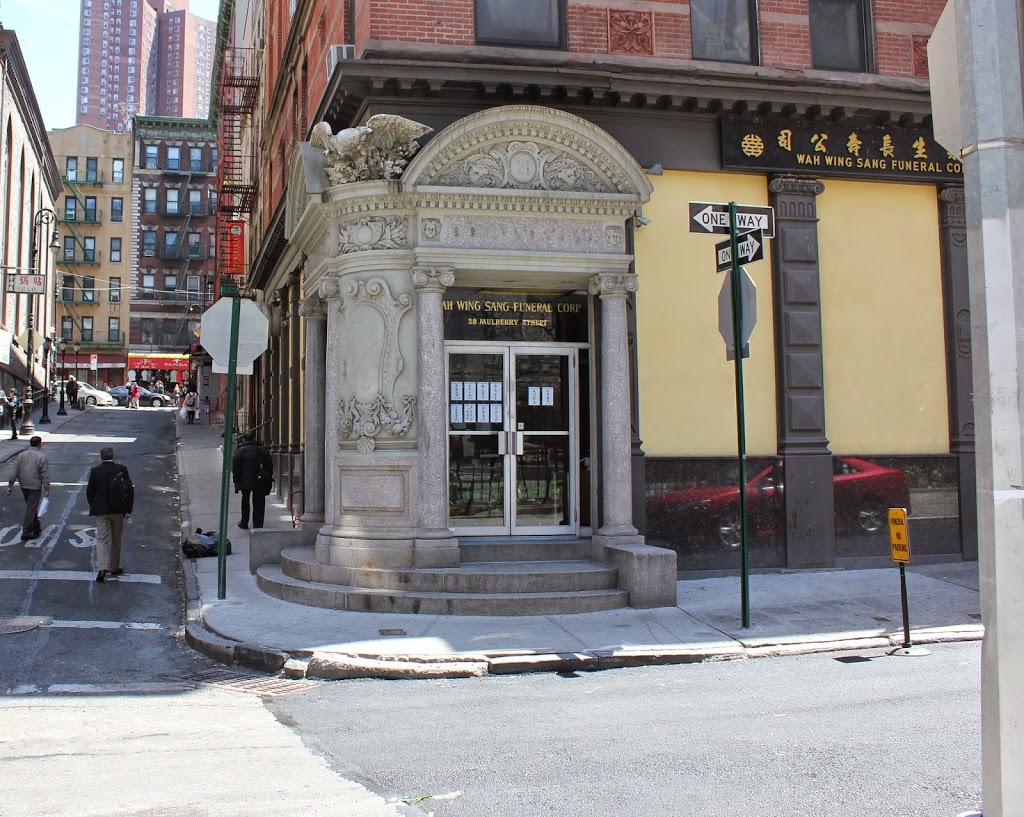The Metropolitan Opera House in New York City, around 1905. Image courtesy of the Library of Congress, Detroit Publishing Company Collection.
The scene in 2014:
Located diagonally across from the Casino Theatre, the Metropolitan Opera House was opened in 1883, along Broadway between 39th and 40th Streets. It closed in 1966, and was replaced by the current office building. Notice the New York Times Building a few blocks away – it’s still there, but is completely overshadowed by the buildings around it, as well as by its own billboards, which cover almost the entire facade.

